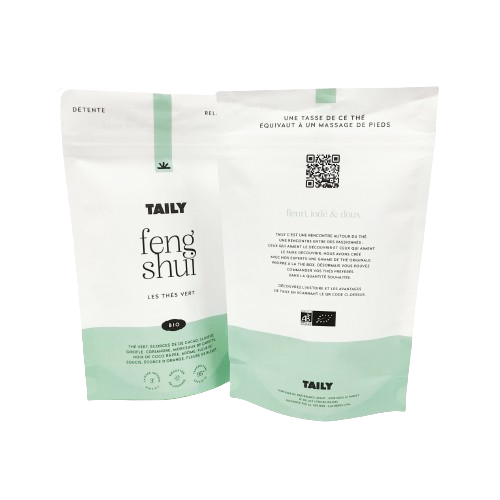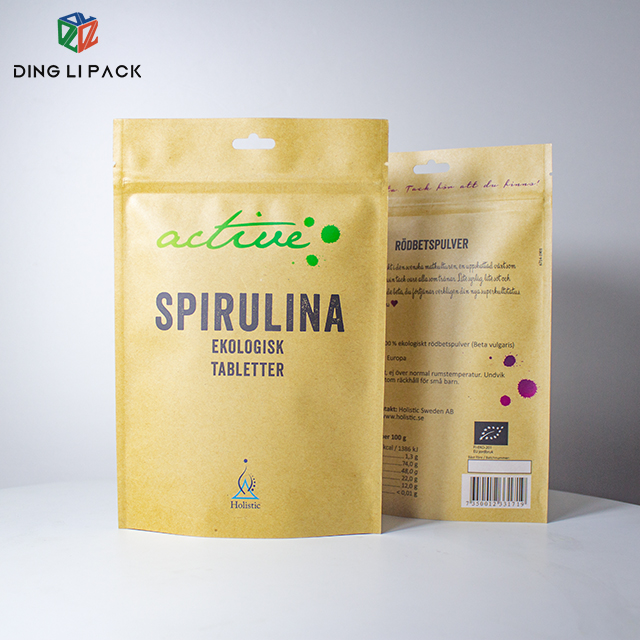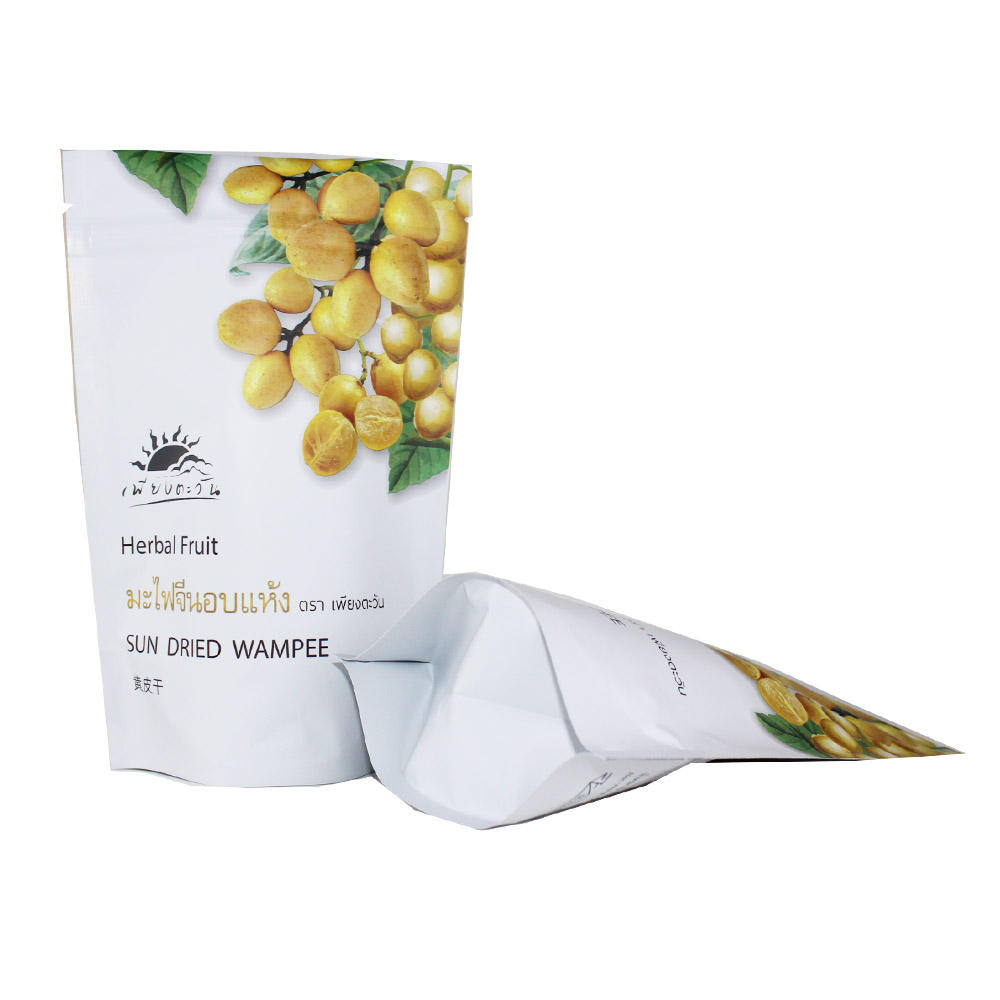Eco-Friendly Stand-Up Pouches

Sustainability & Eco-Friendliness
Preservation & Durability
Cost-Efficiency & Compliance
STAND OUT, SELL MORE!
Ready to succeed?
High-Quality Materials

Personalized Design Services
Practicality Plus
Ultra-High Definition Printing



-
1
Raw Material Acquisition
We implement a strict supplier review process, selecting only high-quality eco-friendly raw materials to ensure that each Eco Friendly Stand Up Pouch starts with top-notch quality.
-
2
Design and Modelling
We have a professional design team for customer-specified design and 3D modelling. We encourage customer participation in the design process and are committed to meeting your customization demands as closely as possible.
-
3
Profile Cutting & Shaping
High-precision equipment is used for cutting the material, experienced operators shape it into an Eco Stand Up Pouch; checks are conducted to ensure size conformity to specifications.
-
4
Product Printing
Flexographic printing technology is used to imprint required details such as product information, brand logo and designs per customers' specifications. All our inks used come from environmentally friendly sources in line with sustainability goals.
-
5
Quality Inspection & Packaging
In the final stage, an exhaustive quality control process takes place where every item goes through detailed rigorous testing and all qualified pouches are orderly adorned before setting off from our factory gate towards their final sales journey!
FAQ
Eco-friendly packaging aims to balance the protection and presentation of products with sustainability principles, ensuring that packaging materials are sourced responsibly, used efficiently, and disposed of or recycled in an environmentally friendly manner. If you can't find the bag you need, please let us know as we can create a custom replacement to meet your packaging requirements.
What materials are used to manufacture your eco-friendly packaging products?
Our eco-friendly packaging products are typically made from biodegradable or recyclable materials such as recycled paper, cardboard, bioplastics, or compostable materials derived from plant-based sources.
Can you provide certifications or documentation confirming the eco-friendly attributes of your packaging materials?
Yes, we can provide certifications such as FSC (Forest Stewardship Council), BPI (Biodegradable Products Institute), or certifications indicating compliance with compostability standards, depending on the specific requirements of your project.
Are your eco-friendly packaging products suitable for food contact applications?
Yes, our eco-friendly packaging products are designed and tested to meet food safety regulations and are suitable for direct contact with food products.
Can you provide customization options for eco-friendly packaging products to meet our specific branding and packaging needs?
Absolutely, we offer a wide range of customization options including size, shape, color, printing, and branding to ensure that our eco-friendly packaging products align with your brand identity and packaging requirements.
Can I get custom sizes?
Yes, if your order for custom packaging meets the MOQ for your product we can customise the size and print.
STAND OUT, SELL MORE!
Ready to succeed?
THE COMPREHENSIVE GUIDE TO eco friendly PACKAGING
Welcome to our comprehensive guide on the world of stand-up pouch packaging! As a leading packaging production company, we're excited to share our expertise and insights on this innovative and versatile packaging solution. Whether you're a seasoned professional in the packaging industry or simply curious about the latest trends and technologies, this blog is designed to provide you with all the information you need to make informed decisions about your packaging needs.
Q1:What are Eco-friendly stand-up pouches?
Green packaging, also known as "environmentally friendly packaging", is a new concept in the packaging industry. It refers to the protection of the environment and life safety, rational use of resources, with safety, economy and waste can be treated and reused packaging. Many developed countries summarize green packaging as a "4R1D" principle of packaging design, that is, Reduce(reduce), Reuse(can be reused), Recycle (can be recycled), Refill (can be refilled), Degradable (can degrade) packaging.
Q2:The specific requirements of Eco-friendly stand-up pouches
Q3:What are Reuse Pouches?
Q4:What are Biodegradable stand-up pouches?
Q5:Is there a difference between degradable and compostable?
Q6:How do Eco Friendly Stand Up Pouches compare to traditional plastic packaging?
Q7:Are Eco Friendly bags more cost-effective than others?
Q8:What types of materials can be used in biodegradable pouches?
Q9:How to tell if a pouch is eco friendly?
Q10: What symbols and certifications are typically involved in Sustainable Packaging Solutions?
Our Recommended Products
Related Articles
Discover how eco-friendly stand-up pouches can boost your brand and support sustainability:
-
🌱 How Eco-Friendly Stand Up Pouches Help Your Business Go Green
Learn how switching to greener packaging benefits both your brand image and the planet. -
🌍 Are Eco-Friendly Pouches the Future?
Find out why more businesses are moving toward sustainable packaging solutions. -
♻️ How Is Flexible Packaging Eco-Friendly?
Understand the environmental advantages of flexible packaging formats.
Our One-Stop Packaging Solutions
For the fishing industry, our custom fishing bait bags ensure safe storage and freshness for soft plastics and other lures. Complete your product packaging with our blister packaging sets, offering excellent protection and display options for various bait products.








